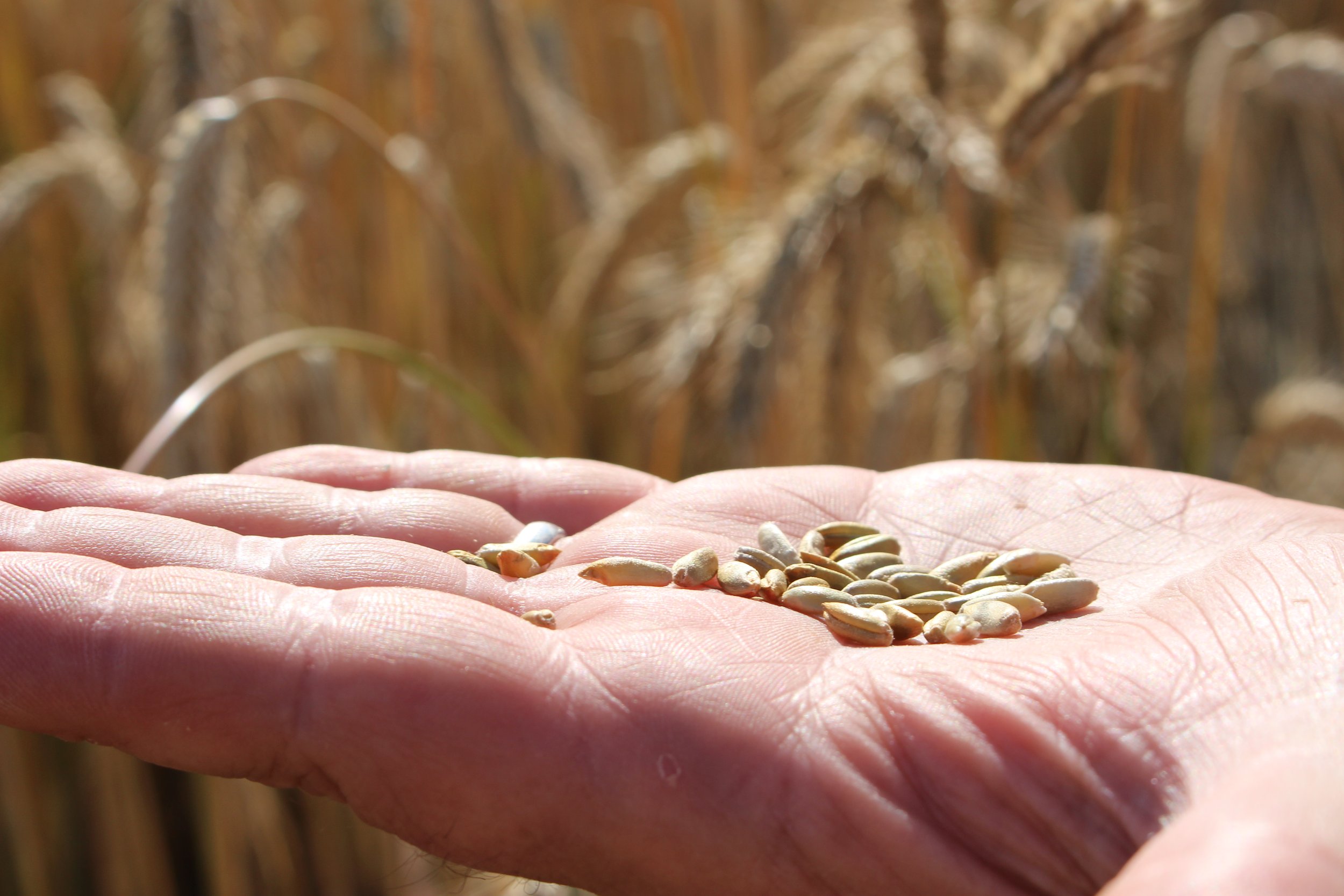Could a greater acreage of hybrid rye help UK agriculture reduce its carbon footprint?
This article first appeared in Farmers Weekly, 5th September 2022.
Why making the right decisions around the varieties, you choose TODAY will help deliver the highest crop margins TOMORROW and secure greater Sustainability for us all in THE FUTURE
SOWING FOR PEAK PERFORMANCE PROJECT (SPP) DESCRIPTION:
Nobody needs to tell of global agriculture's enormous challenge in the next few years. Few will need reminding of UK farmers' critical role in balancing future food production with environmental requirements.
As one of the world's most respected and technically proficient agricultural producers, what we do as an industry over the next 10 years will be seen as a benchmark for many other countries as we all pursue more sustainable food production.
Such a future will inevitably involve less reliance on inputs, more thought about rotations, greater clarity on how we can limit the impacts of our actions on the environment and be increasingly aware of the carbon footprint and energy usage of everything we do.
But it's equally important that we continue to achieve high production levels, meet consumers' quality demands and develop resilient farming systems that will meet the food demands of a rising global population.
This is the very essence of SPP
We want to show you the critical role genetics will play in this new agriculture and how daily decisions made at one of our partners, KWS, will support you in your future challenges.
Importantly, we also want to show you how the varieties KWS offers today can help you maximise your on-farm profitability and play a key role help in helping you progress your journey to future sustainability.
Hybrid rye is of increasing interest to UK growers as an agronomically robust crop offering many rotational and management benefits, says KWS hybrid rye product manager Dominic Spurrier.
Significantly reduced inputs on-farm make it very attractive financially on-farm but could also go a long way to helping UK agriculture reduce its carbon footprint, he explains.
"For a start, the crop requires 100-140kg/ha less Nitrogen than second wheat and has the lowest CO2 footprint among cereals, saving 80kg of CO2 per tonne of grain compared with wheat. It also requires a third less water and will thrive in conditions or soils where wheat and even barley may struggle."
"Hybrid rye also requires less agrochemical inputs and utilises Nitrogen and Phosphorus very efficiently, without compromising yields. Furthermore, its ultra-low take-all carryover and aggressive growth habit helps to reduce blackgrass populations, making it an ideal second cereal or addition to all arable rotations."
Drought tolerance
One of the most drought-tolerant crops available, hybrid rye is well suited to lighter, drier soils, particularly those in areas of low rainfall, he adds.
"However, there are no reasons why it cannot be grown on heavier soils, and many farming businesses in that situation are now considering the crop, which also produces more straw than other cereals.
"These and other benefits mean that hybrid rye meets the requirements for a modern, high-yielding crop, one with the best properties for sustainable and healthy nutrition for people and animals.
"The pig sector is a major potential market for rye because apart from being a cheaper alternative to wheat, it provides a range of additional key benefits.
"In Denmark, Germany, Russia, Poland, and Spain, for example, hybrid rye is already an established component in rations, and now an increasing number of producers in the UK are recognising the advantages of providing pigs with rye-rich feed, including improved gut health and behaviour."
KWS is the leading breeder of this fast-developing crop, with the company offering varieties for wholecrop as silage or AD /biogas feedstock, as well as for producing grain for feed, flour, and distilling.
“Yields of 10-13t/ha are commonplace, with many growers finding that it out-performs wheat and barley as a second or third cereal,” Dominic Spurrier points out. A fast-growing crop with a long drilling window from mid-September through to early November, hybrid rye can be sown when conditions suit, and time allows.”
"At only 300 litres per tonne of grain per hectare, the crop's water requirement is around 25% less than wheat or barley, making it better suited to light land or drought prone regions.
"Hybrid rye also moves through stem elongation faster than any other cereal, with trials showing that it provides intense competition against black grass and reduces the viability of this pernicious weed."
Risk management
According to Graham Redman, a Partner in The Andersons Centre and Editor of the John Nix Farm Management Pocketbook, hybrid rye could be an attractive option for growers in the future.
"The mood in farming is quite positive at present on the back of never-before-seen prices for most crops brought about largely by global uncertainties, high demand and supply chain issues. That has added greatly to farm incomes in the short-term, but major caveats to the current situation mean that the long-term situation might not be so rosy."
"Forward-thinking farm businesses will have recognised the potential impact of BPS reductions for some time. With the security provided by support payments declining and crops costing more to produce, my view is that farmers will focus more on reducing their exposure to risk."
Reduced costs of production
Given the current business environment, hybrid rye could be an attractive option in some situations, he says.
"It costs less to produce than traditional cereal crops, helps to spread the harvest and autumn workload, so demands on labour and machinery are less intense, it is more resilient to drought and well suited to less fertile soils. The trend to more extensive rotations could play into hybrid rye's hands and see it become more popular, but that depends on having a market for the grain."
Peter Riley, a well-known and highly regarded arable agronomist for independent agronomy services provider Farmacy plc, says everything is demand-driven, so if more contracts become available, that would allow more hybrid rye to be grown in the UK.
"That would represent an exciting development and appeal to growers on lighter, drought-prone soils as an alternative to winter and spring barley. With the current state of global events having such an impact which is beyond the scale of what most of us have ever seen, it is difficult to know exactly what the situation will be when decisions over 2023 cropping plans have to be made."
"The world has been thrown upside down, and everything is in limbo. Currently, we are seeing extremely high prices for what grain is available for sale, but with prices for Nitrogen fertiliser also at record levels and some difficulties in securing it many farms will likely be using sub-optimal levels this season."
Lower inputs important
He adds, whatever situation growers find themselves in going forward, subject to marketing contracts being available, hybrid rye could have an increasing role in many parts of the country.
"The reasons include the fact that it requires lower inputs than either wheat or feed barley, its main competitors, making it significantly cheaper to grow. The latest varieties of hybrid rye are a major step forward for growers seeking a viable cropping alternative to help make light-land rotations more agronomically and financially resilient to changing weather patterns."
Key rotational benefits of hybrid rye
High grain yields up to 13t/ha are achievable
Drilling date flexibility and early harvest potential
Low N requirement compared to other cereals
Simple agronomy and reduced inputs needed
High black-grass suppression
High straw yield – 30% higher than wheat or barley
Hybrid Winter Rye varieties Autumn 2022
For more information on
Hybrid Winter Rye Agronomy Guide, Hybrid Winter Rye videos with Tim O’Donovan, Irish research with Teagasc, click HERE
A useful reference to select what varieties suit best based on the drilling slot, and uses what we know about the varieties' take-all tolerance, disease resistance and ability to perform in tough conditions.







